Hamsa Wood Jewellery Storage Box, Whitewashed Trinket Case Keepsake
Hamsa Wood Jewellery Storage Box, Whitewashed Trinket Case Keepsake
Couldn't load pickup availability
This interesting storage box can be used for jewellery (think perfect ring tray, earring or necklace, or hair accessory organiser) and any small items that need a home. Perfect to gift or keep for yourself - this intriguing trinket box would not disappoint. Proudly display in the living room, dining room, or bedroom - the unique carving will always be a talking point among your guests! No need to hide this away in a closet - making it a clever piece to tuck away your precious items while the organiser is acting as a decor item on a tabletop.
The hamsa or “evil eye” is considered a symbol of good fortune and luck. Often seen in the Middle East and North Africa, the Hamsa symbol is traditionally considered a protective talisman. The palm-shaped amulet is often used in jewellery and home decor items.
In Indian culture, Hamsa means "five" and is thought to represent the fingers of our hand. It is considered a symbol for our chakras, energy flow, five senses, and mudras that affect them.
There’s something magical about the Hamsa pattern. This trinket box has been hand-carved and whitewashed to give an ethnic but less conservative look than most available on the market. Store your trinkets in this amazingly beautiful & fanciful box. You will not just add it to your collection but also support fair trade initiatives via the purchase. Now, that's a true win-win!
Interested in a storage box with a Moon phases design? Check out Chandra Kala Moon Phase Round Storage Box.
Love Tree of Life design? Check out all the storage boxes, photo frames, and phone docks using our search bar at the top of the home page.
Features
- Ethically sourced mango wood
- White rub finish
- Popular Hamsa design
- Engraved trinket box
- Fair Trade
- Made in India
Dimensions
- Length = 6 inch
- Width = 4.5 inch
- Height =2 inch
Note
Due to the nature of hand-made products, kindly expect slight imperfections. This is not a defect and "Hamsa Antique Finish Wood Jewellery Storage Box - Whitewashed" is non-refundable due to this reason.
Share

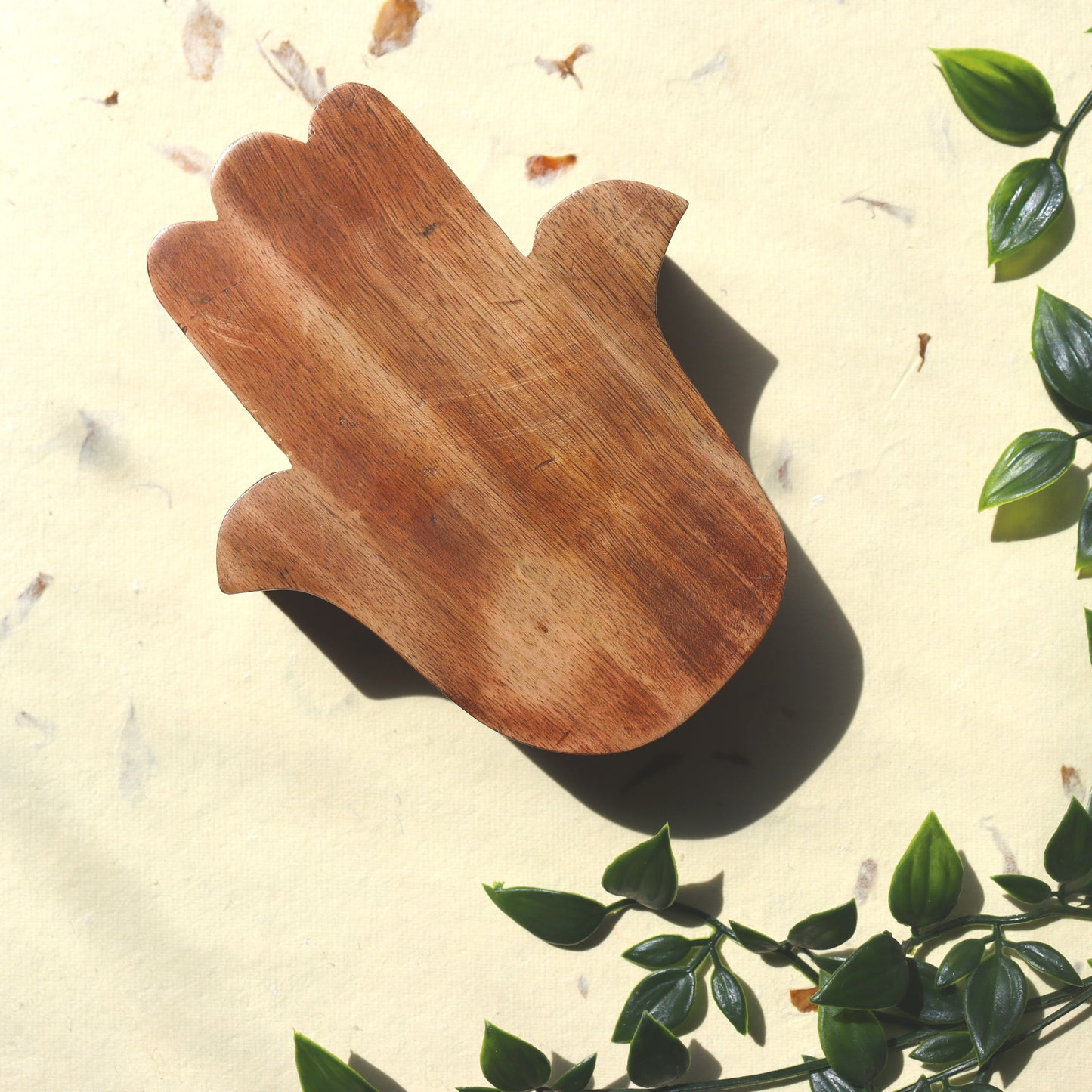
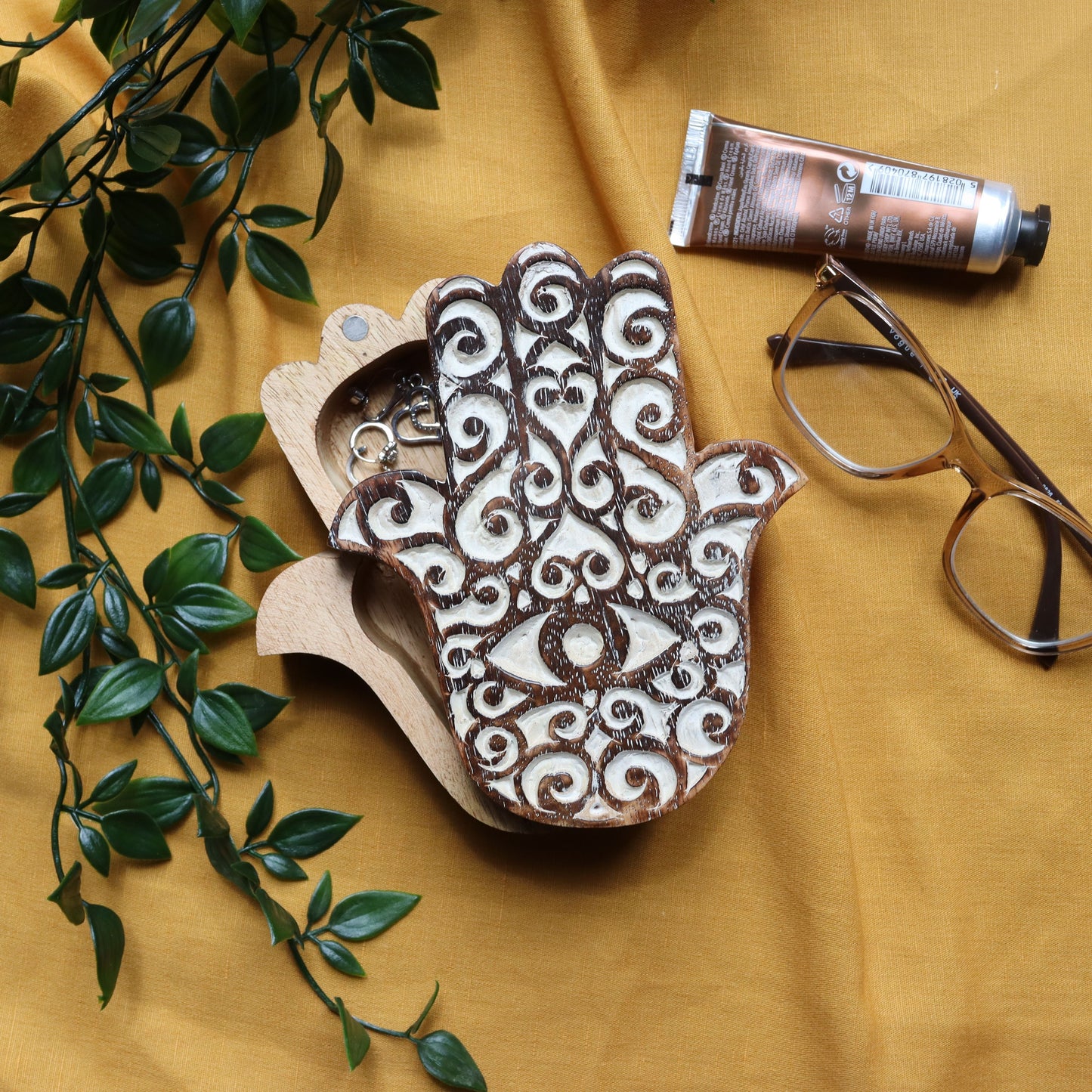
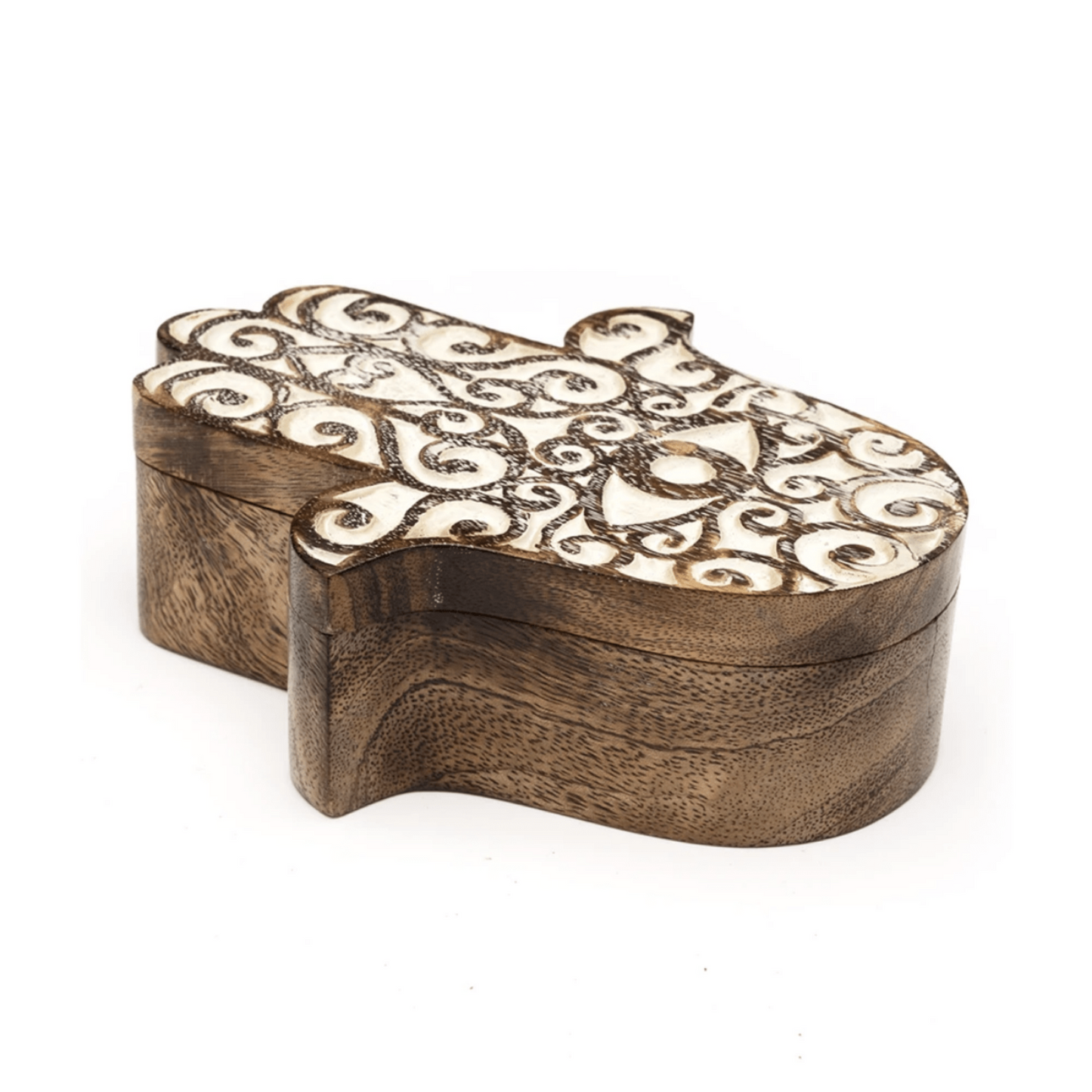
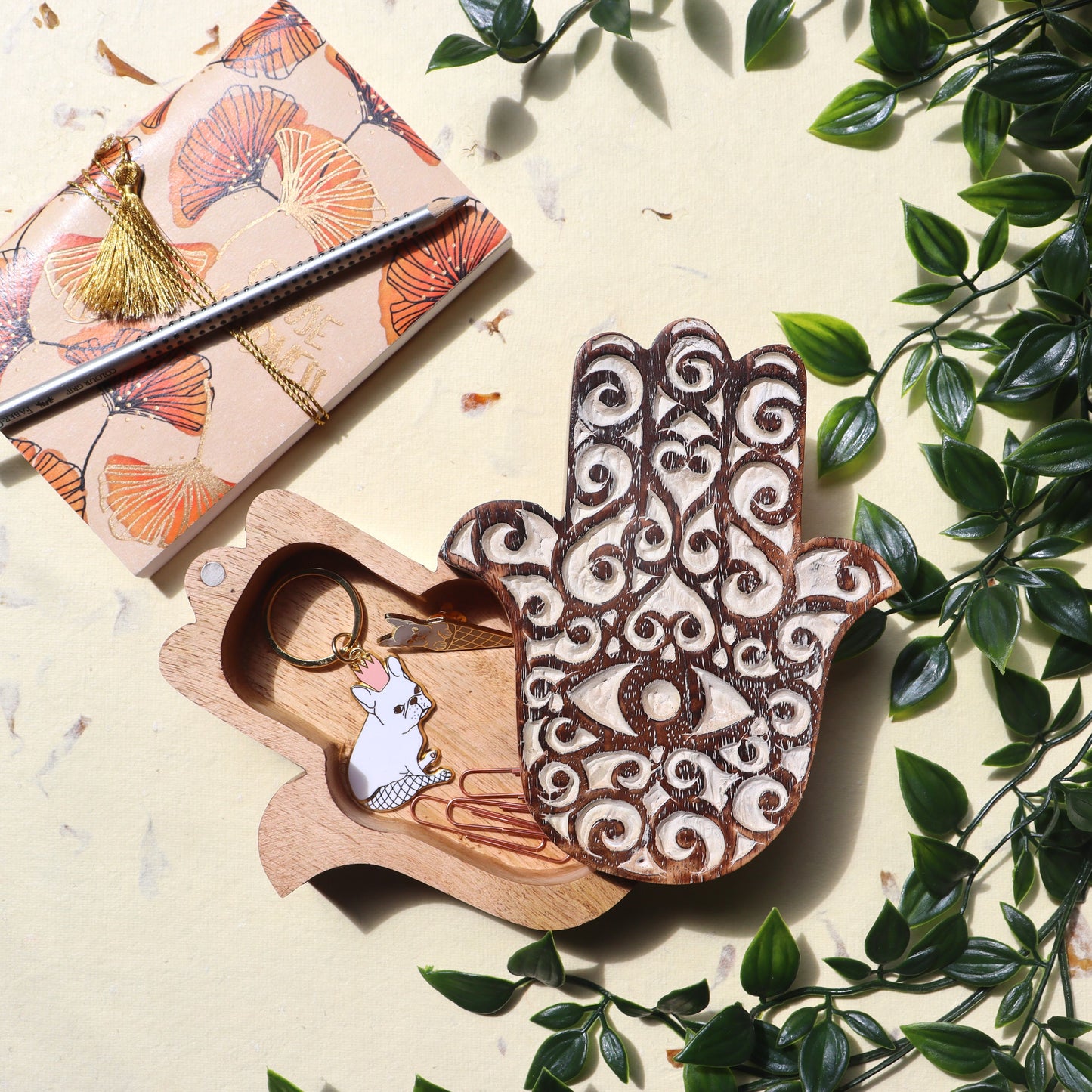
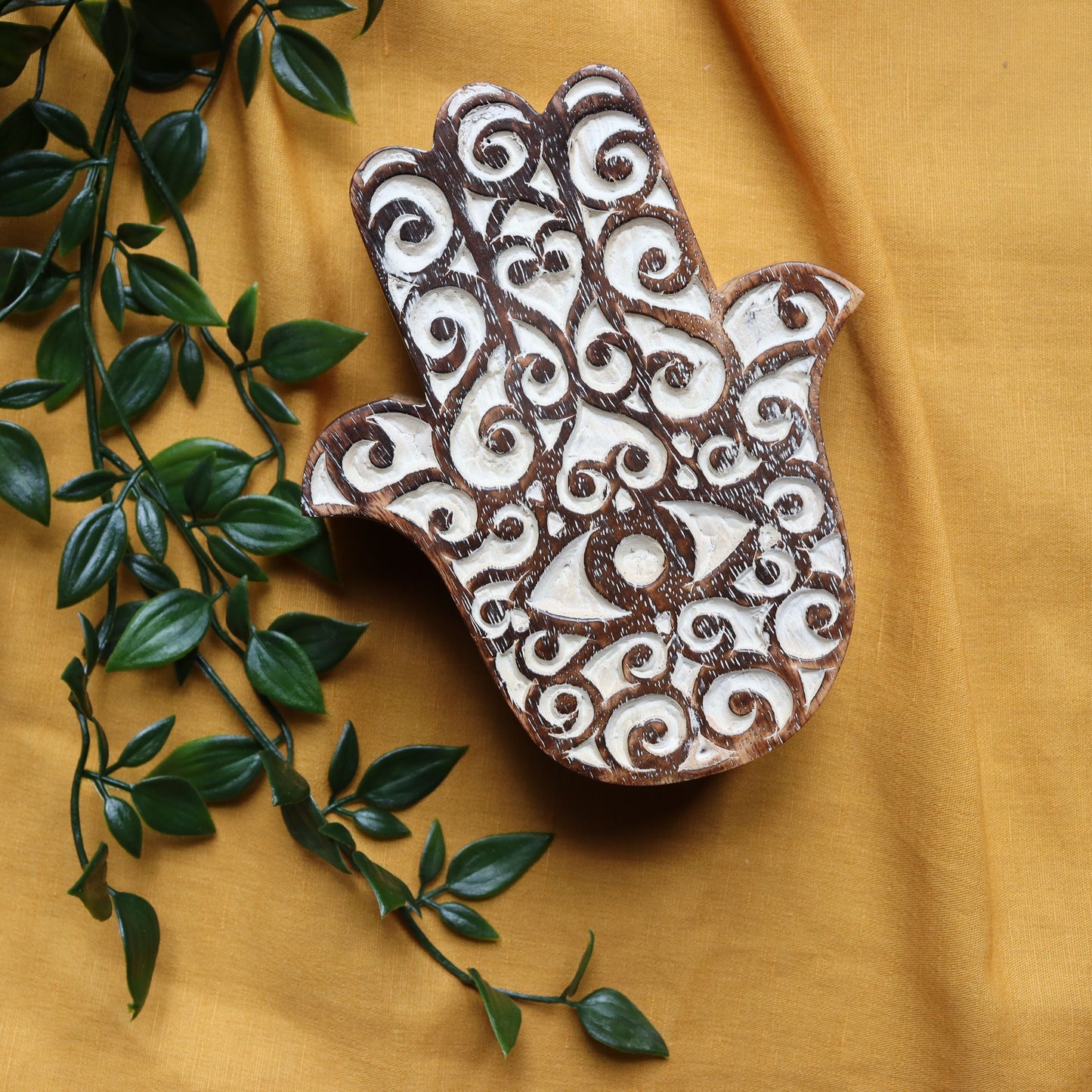
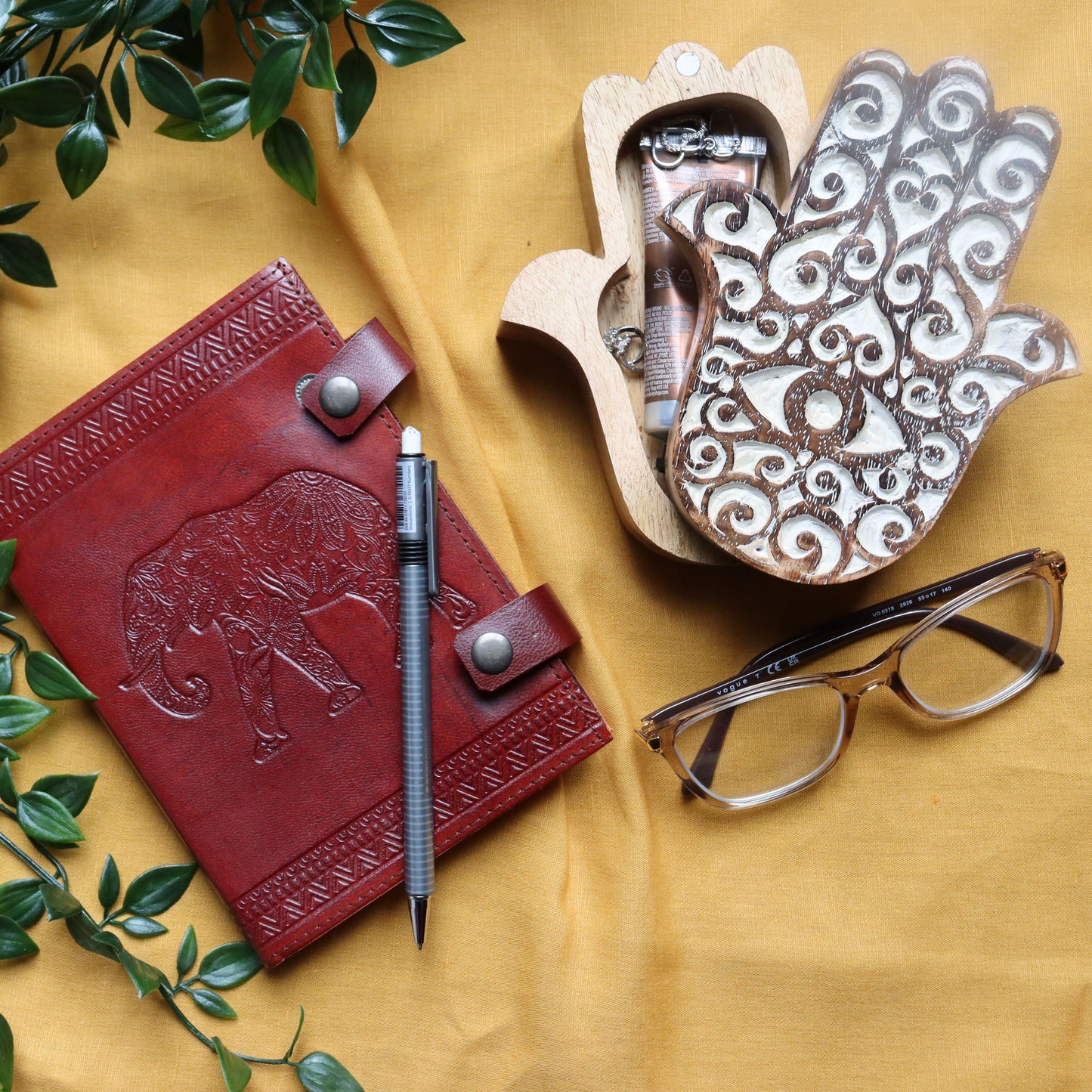

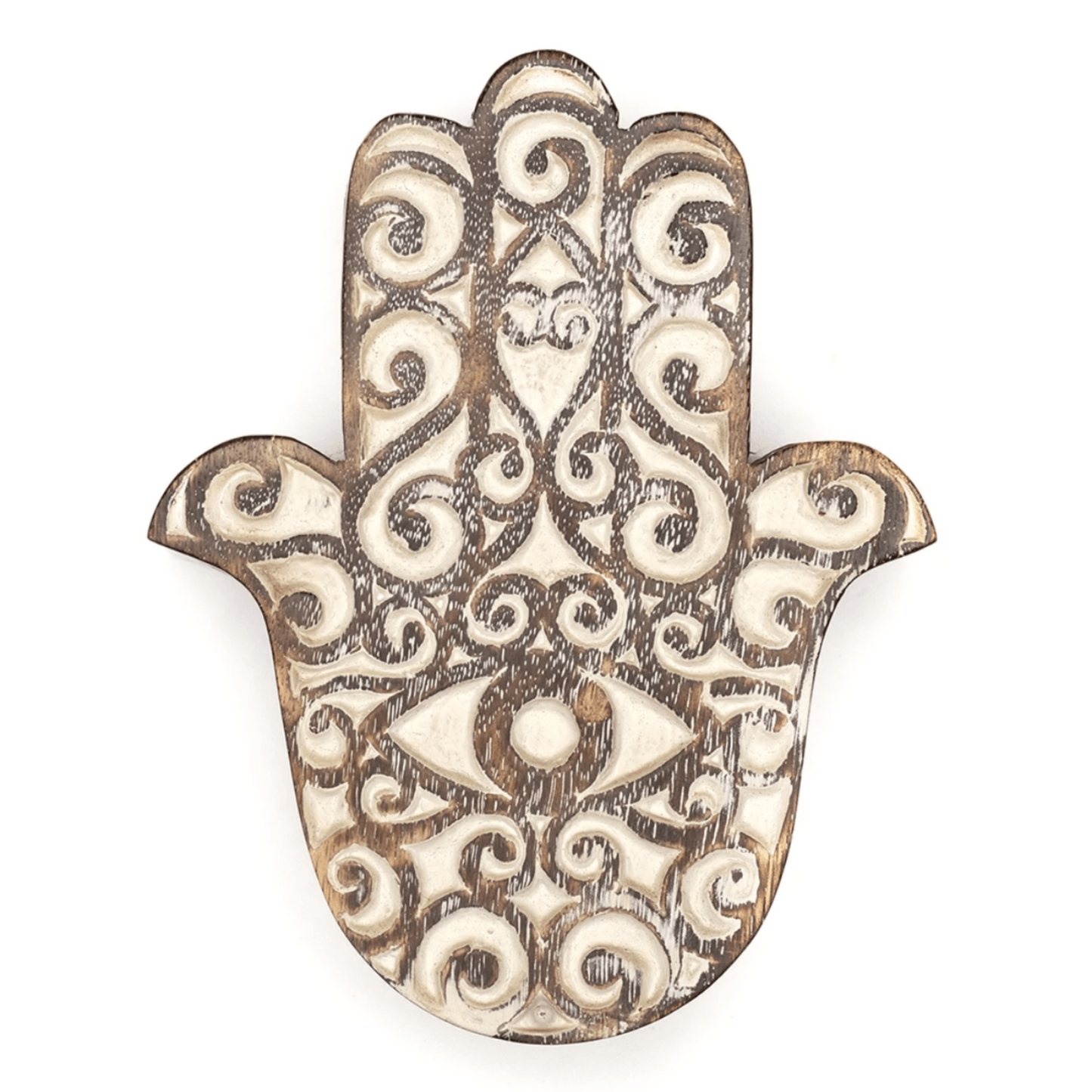
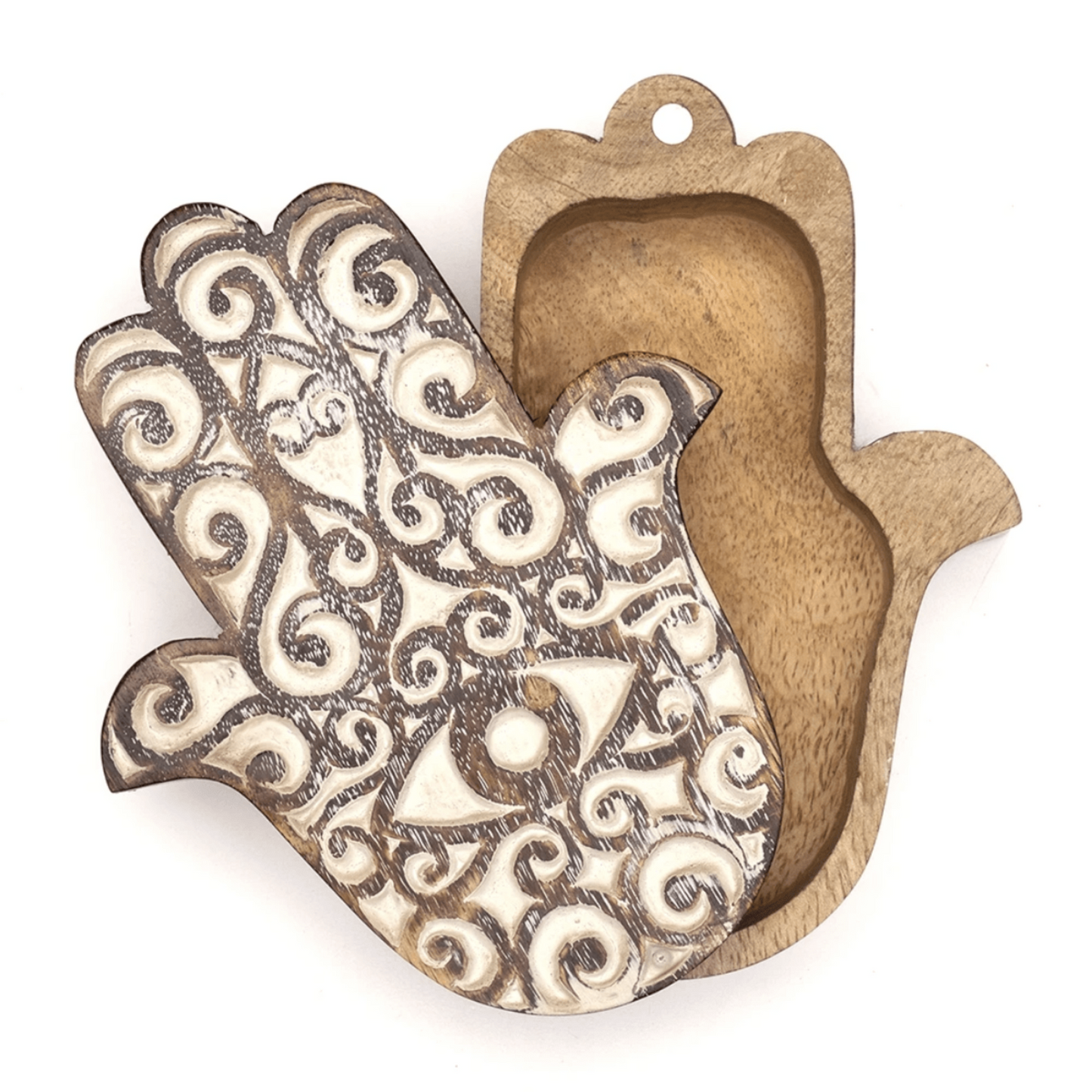
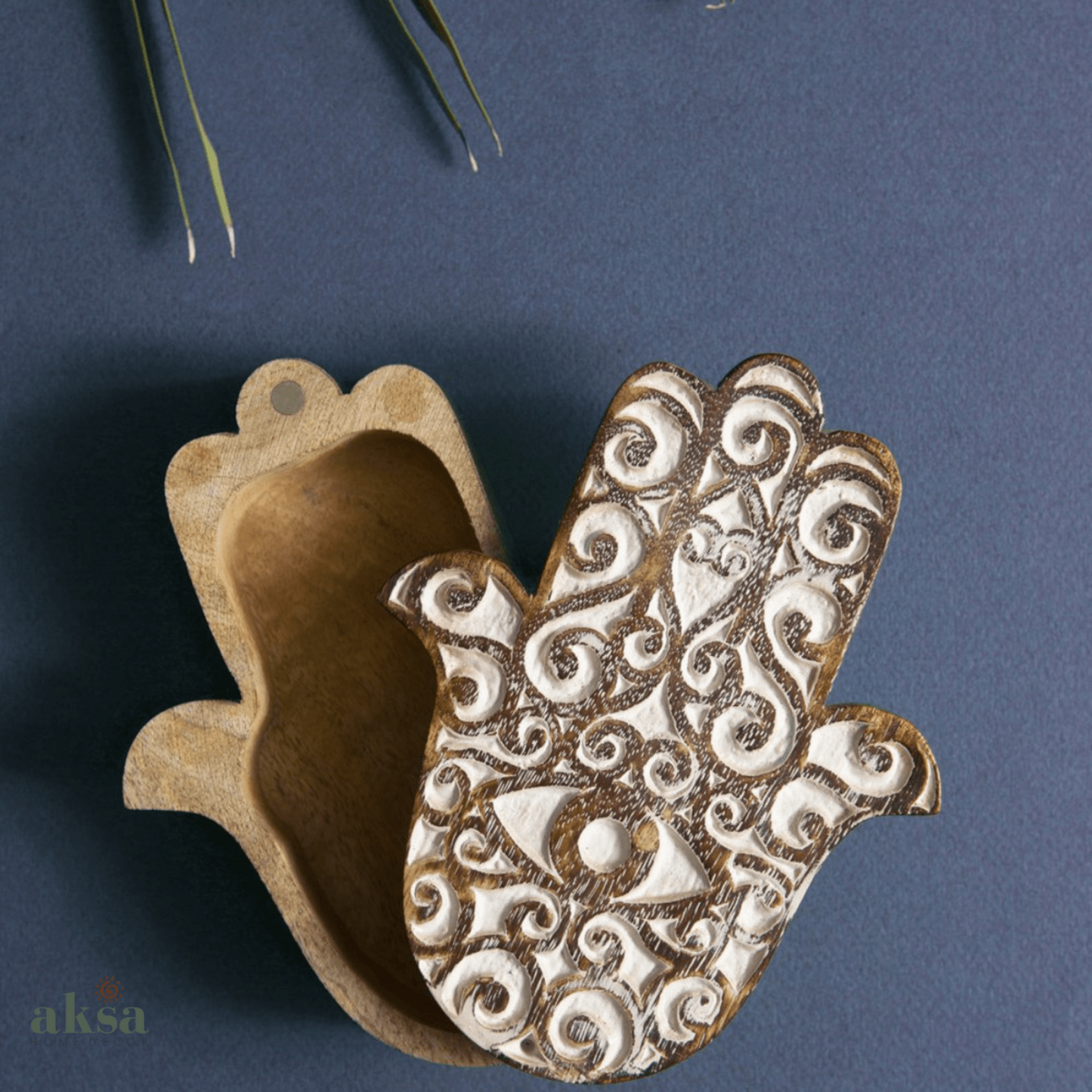

-
Free Shipping over $75
Shipping Policy$10 Fixed standard shipping fee is waived off when the order value is $75 or above (AU) and $100 or above (NZ).
-
-
Buy Now, Pay Later
Choose your favourite service - AfterPay, Zip, Latitude Pay, Klarna
Collapsible content
Why Aksa Keepsake Boxes are the best?
Crafted with precision and imbued with natural elegance, our wood jewellery box are a true work of art. Made from high-quality wood, the jewellery boxes are a testament to fine craftsmanship. The intricate engraving showcases our commitment to detail and aesthetic excellence. Whether placed on a vanity table or gifted to a loved one, these beautiful boxes are sure to make a statement.
Our range of quality storage boxes come in various sizes and shapes to provide with a choice of selecting one that suits best your need and purpose. With its timeless design and versatile functionality, the wood jewellery box combines elegance with practicality. Whether used to store rings, earrings, or delicate chains, our boxes will keep your precious treasures safe and well-protected. Whether shopping for a girlfriend, a Galentine, your mum, or yourself, one of our handcrafted box is the way to go!
About Indian Woodcraft & Artisans
History of Wood
Since centuries, wood has provided fire, shelter, tools, and supported so many inventions e.g. the wheel. Woodcraft in India is dated back to the ancient times of Maharajas. Initially, the art was limited to carving sculptures and windows of temples and palaces. Over many generations and under the influence of its region's culture and locally available wood the art form has evolved and now extends to articles like furniture, decorative pieces, storage boxes, table lamps, toys and puppets.
What is Softwood and Hardwood?
Wood can belong to either of the two categories - softwood or hardwood. Technically, softwood comes from the botanical group Gymnospermae and hardwood comes from the botanical group Angiospermae.
Most softwood are evergreen, have no flowers and develop their seeds in cones (coniferous). They are usually fast growing. This makes them the most widely used woods commercially. Indian Sandalwood is an excellent example of softwood. It has a fragrant resin, thus is highly sought after for making religious images.
Hardwood are usually slower growing than softwoods. They have dense wood lending itself to greater structural integrity than softwood (durability), and is less prone to insect damage. A few examples are walnut, mahogany, balsa, oak, chestnut, elm, teak and sycamore.
About Artisan's Craft
India has an abundance of native wood that lends well to the carving and inlay work. Some examples are Ebony, Rosewood, Sandalwood, Sheesham, and Sal.
The diversity of each region's style and carving technique reflects in the motifs, and patterns on each carved article. The geometrical and floral patterns are the most popular. When an object is carved from a single block, it is believed that the spiritual energy inherent in the tree remains more concentrated.
To produce a beautiful carving from a block of wood requires sharp tools, suitable timber, and planning. Once cut, the wood can not be reattached and thus the artisan has to be careful while shaping his pattern. Finest carding is possible on hardwood due to its ability to split less, and wide range of colours.
What are different wood carving techniques?
There are quite a few carving techniques, some of which are mentioned below.
- Sawn technique - marking of design on a flat piece of wood, and then cutting using a saw.
- Incising and stamping - Scratching wood, making grooves, stamping
- Chip carving - repetitive patterns cut on one chip at a time.
- Flat-pattern carving - think of the carving required to make wooden stamps or printing blocks that are used for dyeing cloths.
- Relief carving - technique to create a three-dimensional effect on a flat surface by cutting back the background and rounding the projecting objects.

Pic: Relief carving used on an Architectural Ensemble from a Jain Meeting Hall
- Intaglio carving - the opposite of relief carving; think of this as moulding.
- Turning - Spinning wood against a tool. This technique has been used to make our nested dolls.

Pic: Nested dolls in a park setting
- Bending technique - for forming curved surfaces
- Joinery - Joints can either fit against each other, across each other or into each other. They can be used to connect lengthwise or at an angle.
What are different wood decoration techniques?
Once our artisan has craved the product, they can employ a range of decorating and finishing techniques to create the final product. Example of such decorations are paintwork, inlay (insetting shapes into cuts made in the wood), banding, and marquetry (pieces are glued to the surface of a piece of wood).

Pic: example of inlay set in Tic Tac Toe Game Set
Conclusion
In many regions, woodcraft production is vital for community livelihoods. By participating with Fair Trade organisations, we contribute to alleviating poverty and promoting sustainability through ethical practices. These organisations aim to educate and empower disadvantaged sections of the Indian community by providing them with job opportunities, gender equality, fair wages, safe and healthy working environment while preserving the local culture & traditional skills.
Book Reference:
Wood - the world of woodwork and carving













